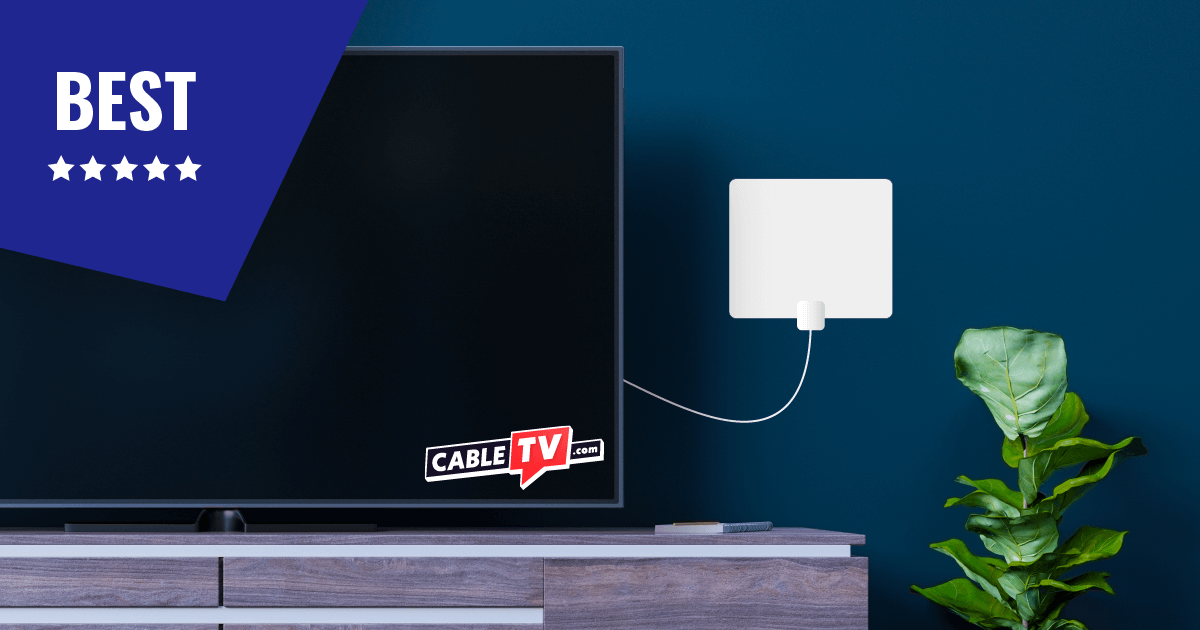The best ways to avoid the cost of another cable box
If you have multiple TVs at home—but you don’t want additional cable boxes running up your cable TV bill—cable splitters are the solution.
We’ll teach you how to install a cable splitter and help you find the right (cheap) cable splitter for you. Our top pick, the Extreme 2-Way Coax Cable Splitter, is the most affordable option.
Pros and cons of coaxial cable splitters
- Cheap price
- Easy installation
- No independent channel viewing
- Potential signal loss
How to install a cable splitter
Setting up TV in multiple rooms is something a cable installer can handle—but it usually costs extra, and they’ll insist you rent more cable boxes.
But, if you can learn how to screw on a coaxial coupler sleeve (clockwise tightens, counter-clockwise loosens—now we’re done) and your TV viewing requirements are simple, you’ve got this.
Best cable TV splitter
Extreme 2-Way HD Digital 1 GHz High Performance Coax Cable Splitter
Coaxial cable splitters take in a cable signal line and channel it out into multiple signals, typically to a couple of TVs and a high-speed cable internet modem.
Whether it’s a plain three-plug metal block or an elaborate multi-port device, all cable splitters do the same thing: redistribute information.
Best cable internet splitter
Extreme 3-Way Unbalanced HD Digital 1 GHz High Performance Coax Cable Splitter
To watch TV in another room without a cable box, however, that information will have to be mirrored. To achieve that, you can attach a cable splitter between the output of your main cable box and first TV, then run one or more secondary lines to other televisions.
The catch: as the descrambling point, the cable box controls everything. That means all split TVs attached to it will be tuned to the same channel. It’s not ideal, but it is workable (and cheap).
Best cable multi-splitter
Antronix 9 Port Bi-Directional Cable TV Splitter
Things to look out for with cable splitters
If you’re running secondary coax cable any longer than 50 feet, you’re going to experience signal loss, so consider purchasing an amplified cable splitter/booster to cover the output distance.
Since cable internet modems only require a fraction of the signal of TV, and they also don’t always play well with boosters, experiment with placing the modem outside of, and then within, the amplified line to measure the best performance.
To get the optimal signal strength from a cable splitter, use a splitter only with the number of outputs required (don’t install a five-way splitter when you only need three outputs, for example).
How to install a wireless cable transmitter
If you don’t want to deal with running cables throughout your house, you can always go wireless.
Transmitting a TV signal from one end of your home to another is no more difficult than setting up Wi-Fi to cover the whole abode—including that “dead corner” of the house. (We all have one.)
You’ll still need a cable splitter for this method, but instead of running a long cable to another room, you’ll connect a short cable to a transmitter.
Ideally, the transmitter will have more than one input: one for the cable box signal and one or more for devices such as streaming boxes or Blu-ray players. Then, you’ll want to hook up a receiver to the secondary TV(s). And boom—you have a multi-screen system with no extra cable boxes or wires.
Pros and cons of wireless TV transmitters
- No running cables
- Better multi-device options
- More expensive than coaxial cable
- Eats high-speed internet bandwidth
Best multi-input wireless TV transmitter
Nyrius ARIES Home+
Downsides of a wireless cable transmitter
As with the coaxial cable method, unfortunately, wireless transmitters still give you only a single point of content: the cable box.
Other TVs in your house will be still mirroring what’s on your main screen, but this way also makes it possible to duplicate your Roku, Xbox, or Blu-ray content in other rooms.
From a strictly aesthetic angle, it’s also possible to use a wireless transmitter on a wall-mounted TV without unsightly cables, structural drilling, and line threading.
Best single-input wireless TV transmitter
Nyrius ARIES Home
Wireless options from TV providers
If you’d like a little more variety in your room-to-room viewing, some cable and satellite providers have engineered their own wireless solutions for homes.
DISH’s powerful Hopper receiver/DVR has optional companion Joey (it’s a kangaroo reference—get it?) mini-receivers that can be set up without cables, and they also run independently (meaning, you can watch different channels in different rooms).
DIRECTV offers similar wireless mini-receivers for its Genie, as do Xfinity’s X1 receiver/DVR and Frontier’s FiOS® system.
Are cable splitters worth it?
If you don’t want to shell out extra monthly rent for additional cable boxes in your house, there are ways around it. The viewing options are fewer, but, hey, you get what you pay for in these post-analog times.
An inexpensive cable splitter, or a still-less-costly-than-a-cable-box wireless transmitter, and a little weekend labor could save you over $100 in annual entertainment money. The cable guy won’t miss it.
Cable splitters FAQ
Is there a difference in cable splitters?
Passive cable splitters are different from A/C-powered splitters. Signals traveling through passive splitters degenerate slightly with each split. Powered splitters boost signals to their original strength from the source.
Do cable splitters weaken signal?
Passive cable splitters can weaken TV signals, but not always noticeably. Cable length and distance from the signal source are more likely to affect TV quality, in which case a powered cable splitter can usually fix the problem.
Does a cable splitter reduce internet speed?
As with TV signals, internet speed isn't usually impacted by the use of a passive cable splitter. But, unlike TV signals, a powered cable splitter won't boost internet speed.









